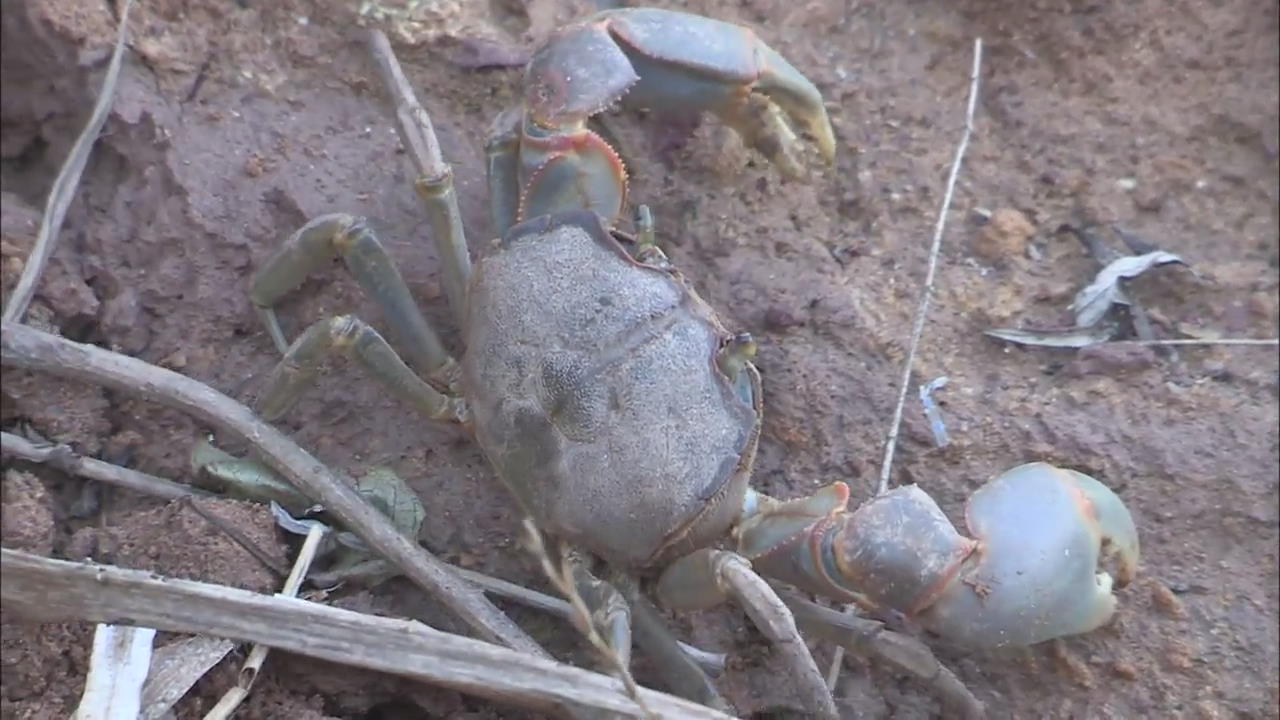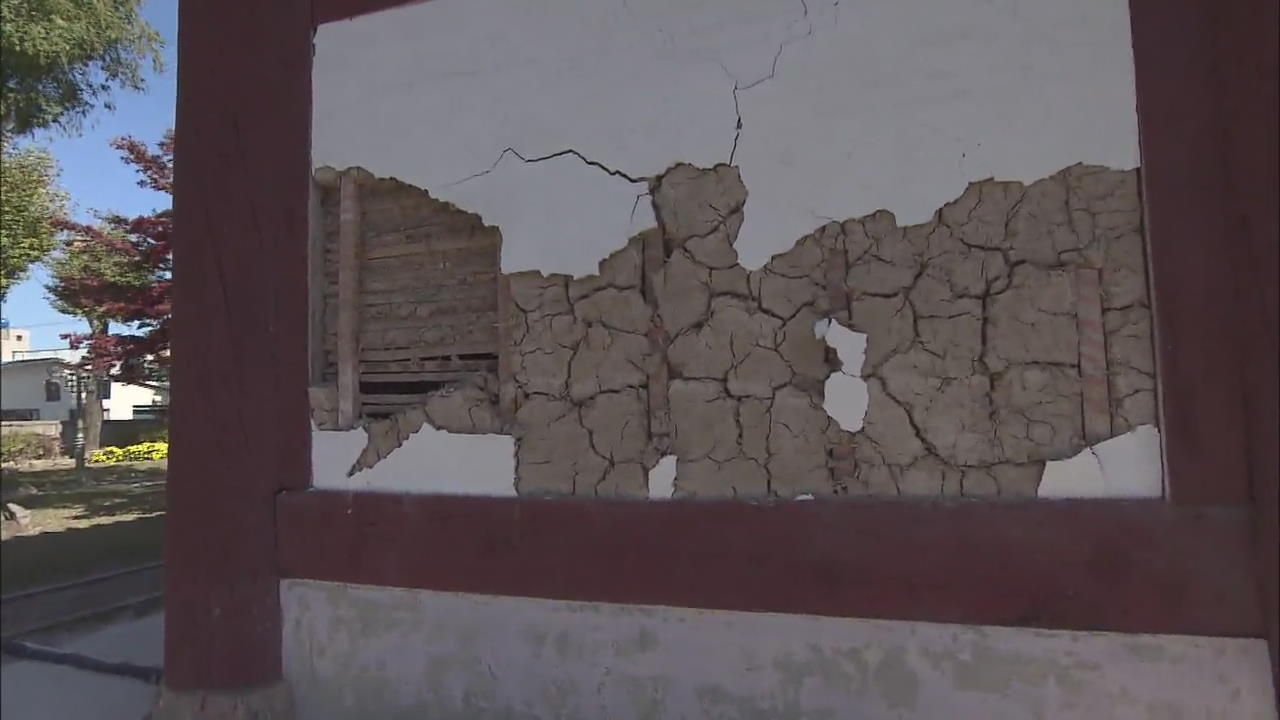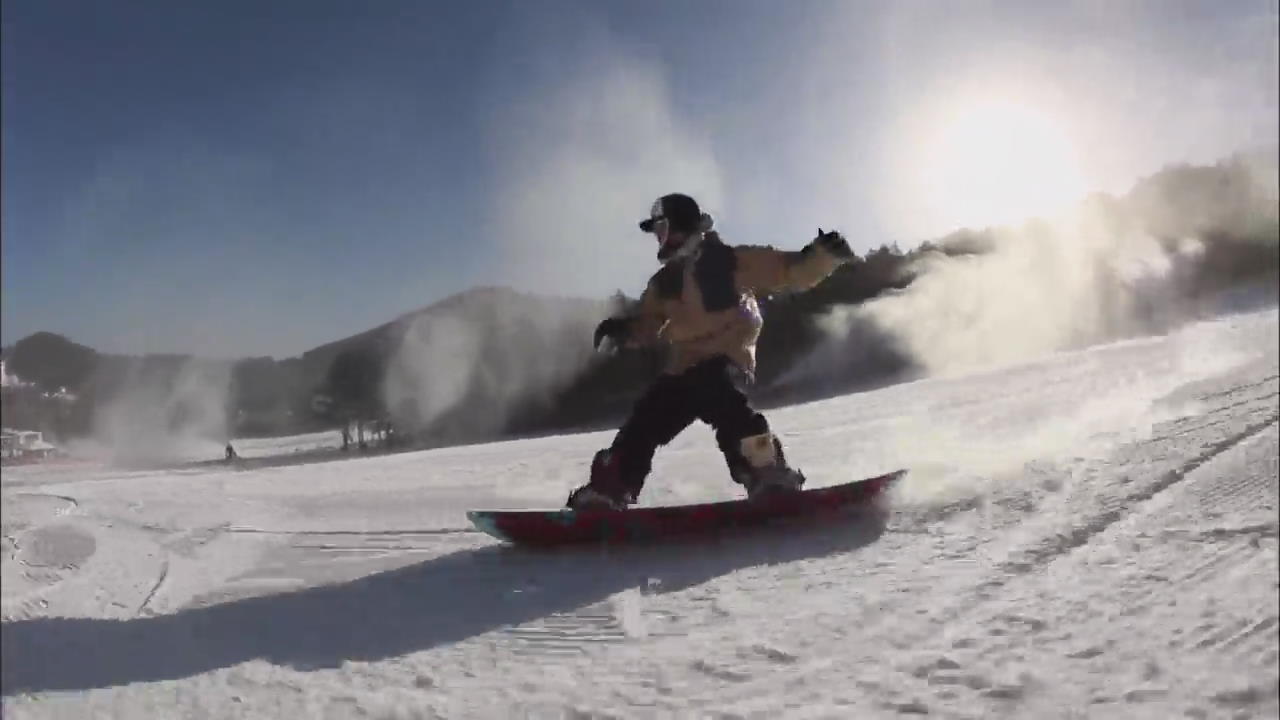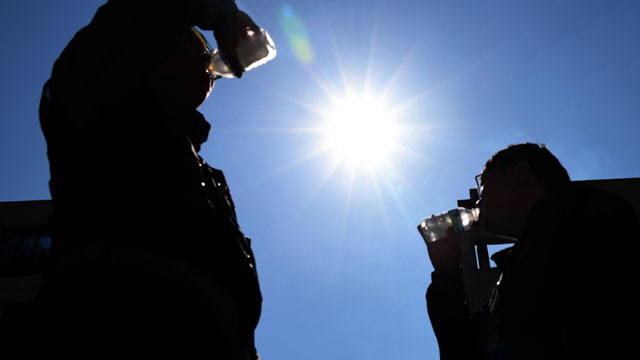Mud-Flat Crabs
입력 2017.11.20 (14:58)
수정 2017.11.20 (16:49)
읽어주기 기능은 크롬기반의
브라우저에서만 사용하실 수 있습니다.
[Anchor Lead]
Mud-flat crabs have been on the verge of extinction since its habitats were destroyed by reckless development and environmental pollution. But now a new home for the endangered crustacean has been provided inside the Hallyeohaesang National Park.
[Pkg]
This is Wolcha mudflat in the Hallyeohaesang National Park. Last year 23 mud-flat crabs were discovered here. This crab species is classified as a level 2 endangered wild animal. Dwelling inside a hole on the mud flats, an adult mud-flat crab can grow up to 5 centimeters wide across its carapace and has large claws.
[Soundbite] Lee Sang-gyu(Researcher, Korea National Park Service) : "The mud-flat crab's physical characteristics include four broad anterolateral teeth and purplish claws. And there are bumps under its eyes."
The mud-flat crabs were commonly spotted along the shores of Korea in the past, but their numbers have dramatically declined in recent years to the point where only one or two are seen at each habitat. In order to preserve the species, a new home has been provided at Wolcha Mudflat, the largest crab habitat in Korea. Man-made structures such as concrete retaining walls and farm roads have been razed. In their place? Natural rocks and seaside lawn grass.
[Soundbite] Moon Myeong-geun(Manager, Korea National Park Service) : "We plan to discover the habitats of endangered species such as the milky fiddler crab and mud-flat crab, and remove artificial structures to restore their natural habitats."
It's been confirmed that two mud-flat crabs have moved into the new dwelling earlier this month.
Mud-flat crabs have been on the verge of extinction since its habitats were destroyed by reckless development and environmental pollution. But now a new home for the endangered crustacean has been provided inside the Hallyeohaesang National Park.
[Pkg]
This is Wolcha mudflat in the Hallyeohaesang National Park. Last year 23 mud-flat crabs were discovered here. This crab species is classified as a level 2 endangered wild animal. Dwelling inside a hole on the mud flats, an adult mud-flat crab can grow up to 5 centimeters wide across its carapace and has large claws.
[Soundbite] Lee Sang-gyu(Researcher, Korea National Park Service) : "The mud-flat crab's physical characteristics include four broad anterolateral teeth and purplish claws. And there are bumps under its eyes."
The mud-flat crabs were commonly spotted along the shores of Korea in the past, but their numbers have dramatically declined in recent years to the point where only one or two are seen at each habitat. In order to preserve the species, a new home has been provided at Wolcha Mudflat, the largest crab habitat in Korea. Man-made structures such as concrete retaining walls and farm roads have been razed. In their place? Natural rocks and seaside lawn grass.
[Soundbite] Moon Myeong-geun(Manager, Korea National Park Service) : "We plan to discover the habitats of endangered species such as the milky fiddler crab and mud-flat crab, and remove artificial structures to restore their natural habitats."
It's been confirmed that two mud-flat crabs have moved into the new dwelling earlier this month.
■ 제보하기
▷ 카카오톡 : 'KBS제보' 검색, 채널 추가
▷ 전화 : 02-781-1234, 4444
▷ 이메일 : kbs1234@kbs.co.kr
▷ 유튜브, 네이버, 카카오에서도 KBS뉴스를 구독해주세요!
- Mud-Flat Crabs
-
- 입력 2017-11-20 14:56:05
- 수정2017-11-20 16:49:46

[Anchor Lead]
Mud-flat crabs have been on the verge of extinction since its habitats were destroyed by reckless development and environmental pollution. But now a new home for the endangered crustacean has been provided inside the Hallyeohaesang National Park.
[Pkg]
This is Wolcha mudflat in the Hallyeohaesang National Park. Last year 23 mud-flat crabs were discovered here. This crab species is classified as a level 2 endangered wild animal. Dwelling inside a hole on the mud flats, an adult mud-flat crab can grow up to 5 centimeters wide across its carapace and has large claws.
[Soundbite] Lee Sang-gyu(Researcher, Korea National Park Service) : "The mud-flat crab's physical characteristics include four broad anterolateral teeth and purplish claws. And there are bumps under its eyes."
The mud-flat crabs were commonly spotted along the shores of Korea in the past, but their numbers have dramatically declined in recent years to the point where only one or two are seen at each habitat. In order to preserve the species, a new home has been provided at Wolcha Mudflat, the largest crab habitat in Korea. Man-made structures such as concrete retaining walls and farm roads have been razed. In their place? Natural rocks and seaside lawn grass.
[Soundbite] Moon Myeong-geun(Manager, Korea National Park Service) : "We plan to discover the habitats of endangered species such as the milky fiddler crab and mud-flat crab, and remove artificial structures to restore their natural habitats."
It's been confirmed that two mud-flat crabs have moved into the new dwelling earlier this month.
Mud-flat crabs have been on the verge of extinction since its habitats were destroyed by reckless development and environmental pollution. But now a new home for the endangered crustacean has been provided inside the Hallyeohaesang National Park.
[Pkg]
This is Wolcha mudflat in the Hallyeohaesang National Park. Last year 23 mud-flat crabs were discovered here. This crab species is classified as a level 2 endangered wild animal. Dwelling inside a hole on the mud flats, an adult mud-flat crab can grow up to 5 centimeters wide across its carapace and has large claws.
[Soundbite] Lee Sang-gyu(Researcher, Korea National Park Service) : "The mud-flat crab's physical characteristics include four broad anterolateral teeth and purplish claws. And there are bumps under its eyes."
The mud-flat crabs were commonly spotted along the shores of Korea in the past, but their numbers have dramatically declined in recent years to the point where only one or two are seen at each habitat. In order to preserve the species, a new home has been provided at Wolcha Mudflat, the largest crab habitat in Korea. Man-made structures such as concrete retaining walls and farm roads have been razed. In their place? Natural rocks and seaside lawn grass.
[Soundbite] Moon Myeong-geun(Manager, Korea National Park Service) : "We plan to discover the habitats of endangered species such as the milky fiddler crab and mud-flat crab, and remove artificial structures to restore their natural habitats."
It's been confirmed that two mud-flat crabs have moved into the new dwelling earlier this month.
이 기사가 좋으셨다면
-
좋아요
0
-
응원해요
0
-
후속 원해요
0

















이 기사에 대한 의견을 남겨주세요.